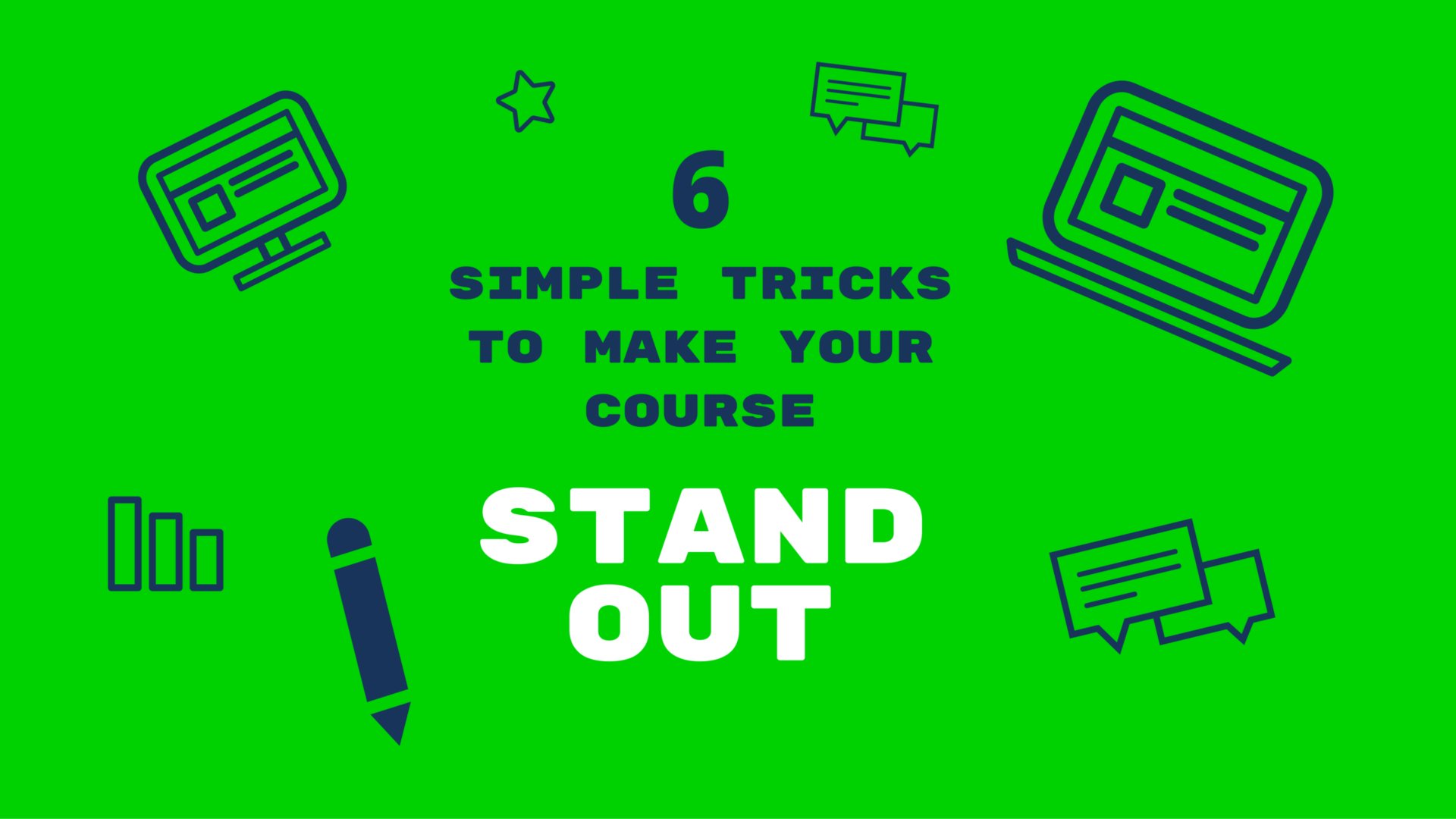5 Ways To Make Your eLearning Course Stand Out From The Rest
Whether you’re using your online course as a marketing tool, or as a resource to train employees, making it stand out is crucial. As of 2016, approximately 15% of U.S. students pursuing higher education completed their courses entirely from a distance. This is an excellent representation of how many people are willing to learn online, and the successful delivery of those courses shows how effective they are.
1. Never Underestimate The Power Of Your Course Title
Think of your course title in the same way as you’d think of a newspaper headline. It needs to draw attention, but without being too sensationalist. If you leave it to fall flat, potential learners who are comparing your course with your competitors’ courses may head elsewhere.
Another way to think of your course title is to compare the potential benefits with those of great blog titles. According to HubSpot, the right blog title can increase click-through rates by up to 500%. Although not everyone who clicks onto your course will choose to pursue it, having more traffic certainly increases your odds of achieving a conversion.
In addition to making your title catchy, you need to ensure it clearly outlines the content of your course. Having a catchy title that isn’t concise is pointless. Either you won’t attract any attention because the title is too confusing, or you’ll draw the wrong attention altogether.
2. Follow Up The Promise Of Your Course With A Clear Structure
Your title and your course description can promise the Earth in terms of results. However, there’s still every chance your prospective students won’t buy it if they can’t immediately see how you’ll deliver the goods.
Although you can’t show them all the content of your course before they purchase it, you can give a clear idea of what’s ahead. One of the best ways to do this is to include the following in your description or the course sample:
- An introductory welcome guide, complete with who the course is suitable for, and how they’ll benefit from it.
- An outline that includes learning objectives and different modules.
- Details of the different assessments.
- Information regarding any deadlines.
- The qualifications of those who developed the course, as well as those of any potential assessors.
- Proposed learning resources.
Identifying the content of your course along with its structure is a little like providing a book blurb along with chapter titles. It gives your potential students (readers) the chance to see if what they’re about to buy is right for them. When you do this effectively, you’ll ensure your eLearning course stands out from the rest.
3. Introduce Motivation From The Start
Although most students will start out with plenty of enthusiasm, this may quickly begin to wane if the course is not structured properly, and a lack of motivation can increase your drop-out rates. Naturally, much of the motivation needs to come from the students themselves. But this doesn’t mean that generating it is entirely out of your control.
One way to ensure their motivation continues is through using quizzes. While some people see tests as de-motivating, pitching them in the right way can help students see how much progress they’re making. Rather than framing the tests as an opportunity to gauge where they’re falling short, make it clear that testing is a chance for them to measure their learning goals so far.
4. Leverage The Latest Technology With Accessibility Across Multiple Devices
One of the most thrilling aspects of completing an eLearning course is having the chance to fit your academic pursuits into your life alongside your other commitments. If you want to make your course stand out from your competitors’, develop the content so that it works across multiple devices.
Around 22% of 18 to 30-year olds use their smartphones for studying. This figure drops to 18% for those aged 31 and over, but cumulatively those figures are still significant. A lower proportion use tablets; between 4 and 5%. However, this number is growing, and you need to be prepared for this market shift.
5. Try To Deliver Your Course In A Bite-Sized Format
Don’t underestimate the power of delivering your course in a bite-sized format. Even if there’s a lot of ground to cover, offering mini-modules gives students the chance to feel as though they’re making significant progress. For those who are exceedingly busy, it’s an excellent way for them to incorporate training into their lives in the most manageable way possible.
If you’re wondering whether bite-sized format courses are at all popular, you only need to take a look at the Multiple Open Online Course (MOOC) statistics. Around 81-million people worldwide use them to MOOC topics from prestigious universities and other course providers. Courses can range between six to 12 weeks in size, making them small and manageable. Although not all of these count towards an official qualification, the fact that the courses have such a high uptake despite their small size speaks volumes. If people are willing to participate in small eLearning courses even without a measurable outcome, you will find it easy to sell your bite-size course when it contributes to a qualification or another benefit.
There are plenty of ways to make an eLearning course stand out. Grabbing a potential student’s attention with a catchy course title, and feeding their interest with your course description and outline, represents only half the battle. If you’re going to make your content manageable and prevent early dropout rates, positive feedback and digestible modules are crucial. With practice and a few rounds of assessing your analytics, you’ll find the perfect course format for your eLearning package.







